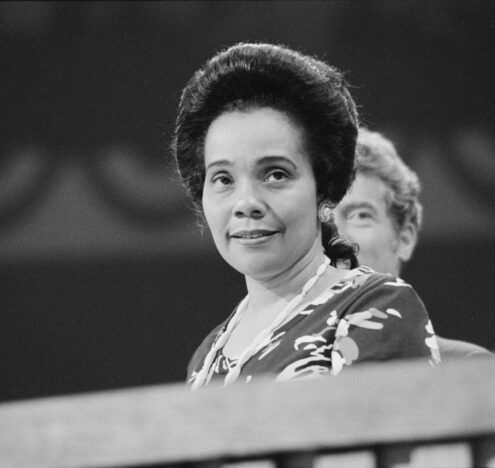In 2022, North Korea tested nearly 68 ballistic missiles of varying ranges and capabilities, surpassing the previous years’ records. This year, the regime has already tested 26 missiles in 11 test launches. Based on the current trajectory, North Korea will most likely exceed last year’s numbers. Each missile test increased security concerns among South Korean political leaders, military personnel, and the public while enhancing North Korea’s missile and nuclear weapons delivery capabilities.
During a policy briefing in January 2023, South Korea’s President Yoon Suk Yeol suggested pursuing an independent nuclear arms program if the security situation with North Korea continued to worsen. Those remarks were immediately backtracked by officials in his administration. Yet, Yoon’s statement appeared to echo the opinions of the majority of the public and some officials in his administration. The comments were an unprecedented departure from previous administrations. But they shed light on the Yoon administration’s view of the North Korean threat.
Yoon has limited options to address the decaying security situation in the Korean peninsula, and each comes with a hefty price tag. South Korea’s potential options would be to seek more conventional and nuclear support from the United States, pursue nuclear weapons by citing Article X and exiting the Non-Proliferation Treaty (NPT), or begin a clandestine nuclear weapons program. Irrespective of South Korea’s options, it must navigate intense geopolitical, diplomatic, economic, and security risks.
The Washington Declaration
During Yoon’s recent visit to the United States to mark the 70th anniversary of the US-ROK alliance on Apr. 26, 2023, the presidents of both countries unveiled the Washington Declaration, reaffirming their security commitments coded in the US-ROK Mutual Defense Treaty. During the event, Yoon reasserted South Korea’s unwavering commitment to NPT obligations to clear any doubts regarding possible nuclear aspirations from his January 2023 comments. But US officials and security experts in Washington remain skeptical of South Korea’s firm commitment to NPT in the long term over growing domestic pressure in the face of North Korea’s mounting nuclear capabilities.
The US should offer more concrete security options that assure the Yoon administration and the public and steer them off of nuclear aspirations to deter the existential threats faced by South Korea from its northern neighbor.
The Washington Declaration is old wine in a new bottle with some refinements. The US and South Korean presidents announced that they would establish the Nuclear Consultative Group “to strengthen extended deterrence, discuss nuclear and strategic planning, and manage the threat to the nonproliferation regime posed by the Democratic People’s Republic of Korea (DPRK).” They already have an Extended Deterrence Strategy and Consultation Group initiative to discuss broader strategy and policy issues to strengthen alliance deterrence on the Korean peninsula and stability in the Indo-Pacific region. The newly proposed Nuclear Consultative Group will be an addition to the existing initiative but more focused on South Korea’s nuclear concerns over North Korea. The declaration has two notable new developments and some concerning ambiguous language.
The first new development is the “regular visibility of strategic assets to the Korean Peninsula.” Under the Washington Declaration commitment, the United States’ Ohio-class ballistic missile submarine is scheduled to visit South Korea soon. Pentagon press secretary Brig. Gen. Pat Ryder declined to comment on the timing of the visit, but it is a significant development since the last visit dates back to the 1980s. The purpose of the visit is to showcase the US commitment to South Korea’s security and discourage it from pursuing nuclear weapons. Besides reassuring its commitments, the ballistic missile submarine visit is a symbolic move to calm the nervousness of South Korea’s political class and the general public because the submarine is capable of responding to any threats in the Korean peninsula with a missile from Guam or Okinawa.
It is no surprise that North Korea described Yoon’s US State visit as “a dangerous one for a nuclear war” and vowed to boost its “military deterrence” in response to the Washington Declaration. China also opposed the US ballistic missile submarine visit and any deployment of US strategic assets in the region. Beijing warned that it would escalate tensions on the peninsula and blamed the United States for pursuing actions in its geopolitical self-interest in the region.
Second, the “cooperative decision-making on nuclear deterrence” between the United States and South Korea is another significant development announced in the Washington Declaration. Even though the final decision regarding nuclear weapons’ use rests with the United States, under the declaration, South Korea will have a voice in nuclear response in the event of a crisis. However, to what extent South Korea’s input plays a role in the US nuclear response decision is still being determined. Despite its practicality, this sets a precedent for other countries under the US extended nuclear deterrence facing nuclear threats, like Japan, Australia, and others, to seek a similar demand in the future.
What South Korea Needs To Think About
Yoon considered the Washington Declaration a political win because it secures assurances from the Biden administration regarding North Korea’s missile tests. Yet, South Korea needs to consider the ambiguities of the declaration.
The first is related to a US response during a nuclear crisis on the Korean peninsula. The declaration states: “any nuclear attack by the DPRK against the ROK will be met with a swift, overwhelming and decisive response.” But there is no clarity on whether the response would be with conventional weapons or extends to nuclear weapons use. South Korea should clarify what the United States’ “swift, overwhelming, and decisive response” involves if attacked with nuclear weapons.
Second, the declaration calls for “regular visibility of strategic assets to the Korean Peninsula.” The text seems to be referring to US nuclear submarine visits, but the frequency of the visits is not mentioned. Also, whether the “visibility of strategic assets” extends to nuclear bombers or the deployment of any nuclear assets is yet to be confirmed. Irrespective of what “visibility of strategic assets” accounts for, such actions will only aggravate North Korea’s belligerence against South Korea. Further, in the past, China raised its objections against THAAD deployment in South Korea and imposed sanctions. Such actions, therefore, will drag South Korea into an ongoing power tussle between the United States and China, which is not good for its economy and security.
And finally, security assurances offered under the Washington Declaration are not groundbreaking and don’t change the status quo of South Korea’s security situation. Irrespective of US assurances, a section of South Korean lawmakers and the public doubts its long-term commitment as the US presidential election approaches. Afraid that if there is a change in guard and the incoming president’s policies are like President Donald Trump’s, South Korea’s security situation will be worse off than it is today.
South Korea’s Next Move
Apart from geopolitical, security, and economic interests in the Indo-pacific region, the US-ROK relationship is focused on protecting South Korea from the DPRK. Furthermore, US extended nuclear deterrence, security cooperation, and the Washington Declaration are intended to restrict South Korea’s nuclear proliferation and address its deepening security concerns. However, other than a couple of notable developments, the declaration is a cosmetic upgrade to the US-ROK existing security commitments. The declaration falls short of alleviating South Korea’s security dilemma with ambiguous promises and only elevates its dependency on the United States for survival.
South Korea should demand clarity on the ambiguous commitments discussed above. Yoon should also explore getting a joint launch control or an equal say in a nuclear response during a crisis. If it is not possible, which is likely, at least the Yoon administration should seek the permanent deployment of more strategic assets on the ground to boost its security, despite potential backlash from China and North Korea. Having joint launch control would act as a stop-gap for South Korea to veer off pressure from its nuclear hawks and the public, which continues to demand more security assurances.
Ideally, a peace agreement between the two Koreas would end South Korea’s enduring security dilemma. But contemporary geopolitical and regional security dynamics are not favorable enough to create such an environment. Until then, the United States should offer more concrete security options that assure the Yoon administration and the public and steer them off of nuclear aspirations to deter the existential threats faced by South Korea from its northern neighbor. Anything less than that, coupled with domestic pressure, may force South Korea to pursue a nuclear weapons program openly or clandestinely in the future. Such a precedency will significantly affect the global non-proliferation regime and security in the East Asia region.




















